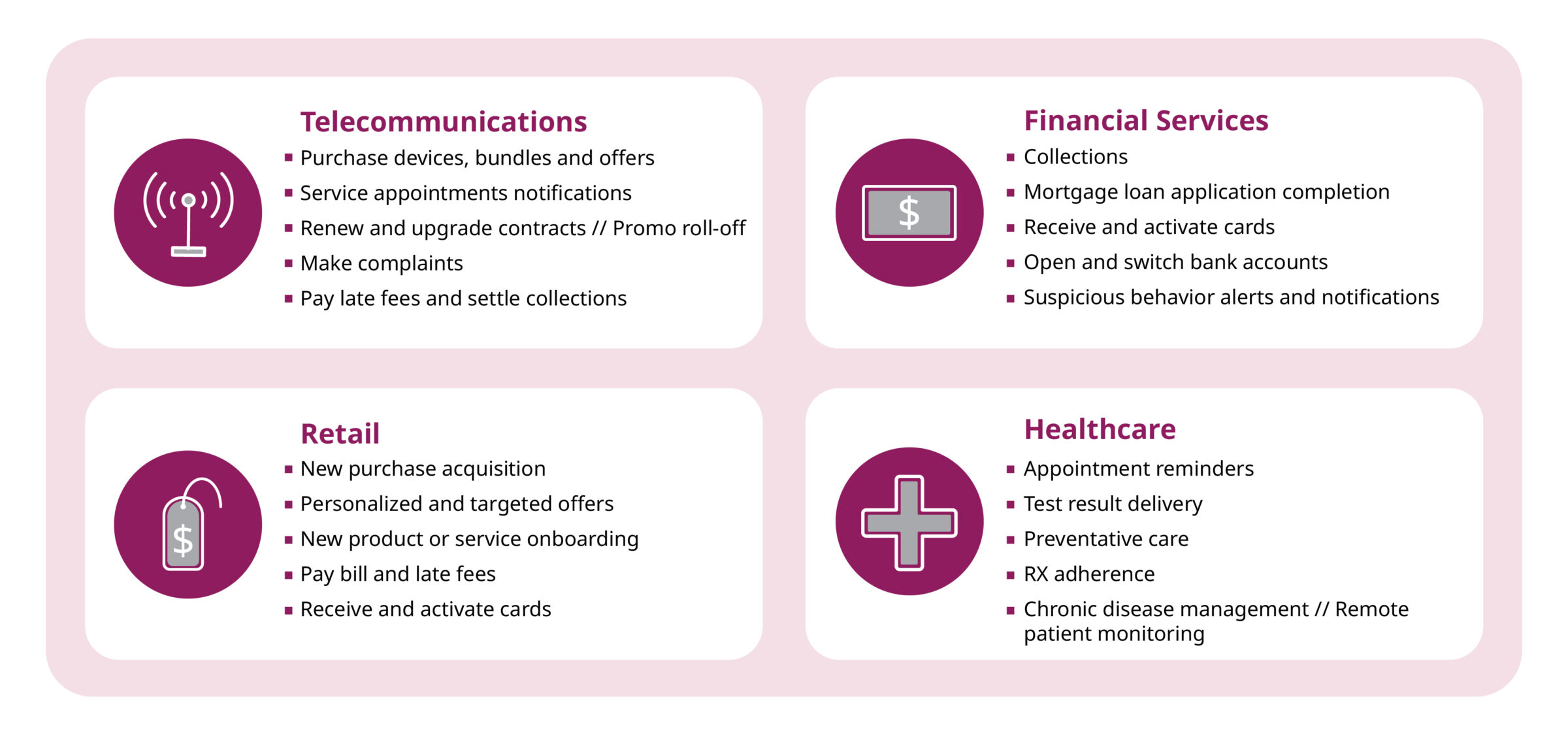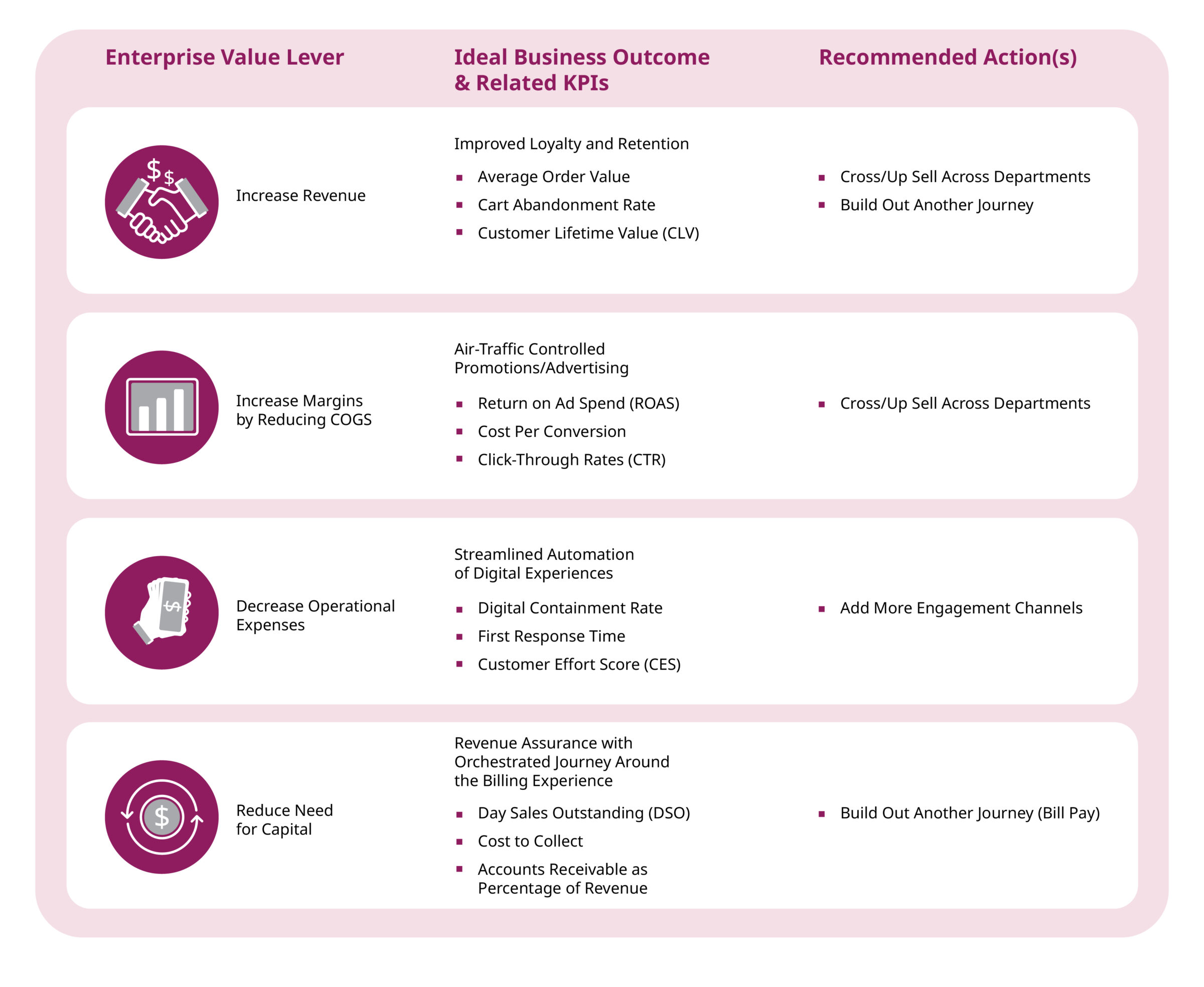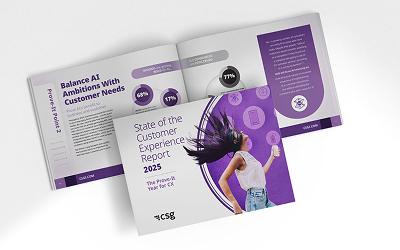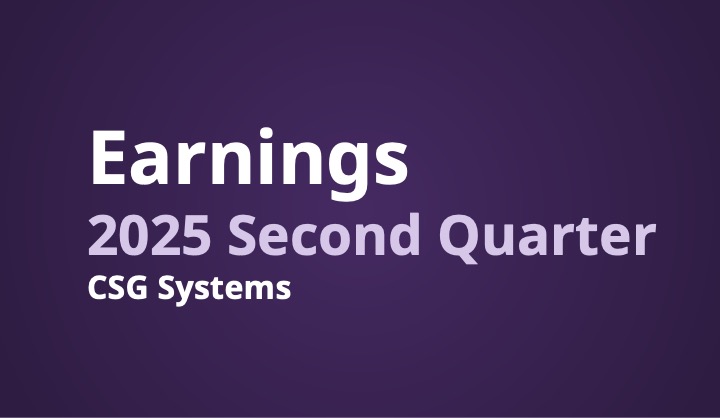It’s no secret many customer experience executives find it challenging to figure out where to start investing in CX initiatives. In fact, a commissioned study of 480+ CX leaders conducted by Forrester Consulting found 90% of companies said identifying where to start is very/extremely challenging. Once CX teams have successfully implemented a journey orchestration engine and realized their first quick win, it can be just as challenging to figure out what to do next.
The next step is to expand customer experience solutions beyond a single department or use case.
3 Strategies to Expand Journey Orchestration
To bring this concept to life, let’s look at any grocery store with a pharmacy.
The pharmacy likely has its own notification program in the form of coordinated emails, texts and/or manual phone calls from the technicians. But if the customer is viewed as more than just a pharmacy customer (i.e., a grocery store customer) a massive opportunity arises to maximize their average cart value. Retail pharmacy customers also shop for vitamins, over-the-counter medications, and fruits and vegetables, etc. at the same grocery store where they receive their medications. By expanding a journey orchestration tool to guide pharmacy customers to purchase relevant health/wellness and grocery items, executives will round out their CX program. Here are three ways to do so:
1. Up-sell products/services across departments to streamline sales
Break down organizational silos and put the customer at the center of your communication strategy by promoting related products from other departments (e.g., health/beauty, produce and fish). Instead of blasting a bunch of emails from multiple departments, a journey orchestration engine can serve as the air traffic controller, coordinating all messages and only sending the most personalized and relevant at the right moment. For example, a customer in the store picking up their prescription for cholesterol medication could receive real-time coupons for heart-healthy, cholesterol-lowering foods such as oats or fruit produce.
2. Add more engagement channels
Omnichannel communication—interacting with customers over their preferred channel—improves the customer experience and increases revenue. According to McKinsey & Co., more than 50% of customers engage with three to five channels during every journey they take to purchase something or resolve a request. Omnichannel customers shop 1.7 times more—and spend more—than shoppers who use a single channel.
Reach more customers by communicating via several channels. Instead of sending targeted messages to segmented distribution lists via email, treat every customer as a segment of one, each with a channel preference. Send personalized, proactive and predictive messages via each customer’s preferred channel (e.g., email, voice, text message or mobile app) and even coordinate communication as they switch devices.
Omnichannel communications include layering seamless engagement across these channels:
-
-
- Email (personalized, targeted messages )
- Website (dynamically changing landing pages to nudge customers down a journey)
- Mobile app (with push notifications delivering personalized calls-to-action)
- SMS/MMS (real-time alerts to catch customer attention in the moment)
- Voice (to handle inbound calls or send automated outbound messages)
- Conversational AI (virtual assistant to digitally contain inquiries)
- Kiosk (streamline bill pay and check-ins)
-
3. Build out another customer journey
Improve the customer experience and promote retention by managing other important touchpoints related to each stage of the customer lifecycle (discover, buy, deliver, use/manage, support/resolve, grow).
Consider managing these high-impact journeys:

Determining Which Strategy Is Best for You
Examine your most important key performance indicators (KPIs) to determine where to expand the power of a journey orchestration platform. Consider the four ways in which this tool can add enterprise value to your organization and retroactively map back to strategic action:

Whether you’re already using a journey orchestration platform or interested in taking a value engineered approach to orchestrating successful customer journeys, connect with our team today to explore all the possibilities.











